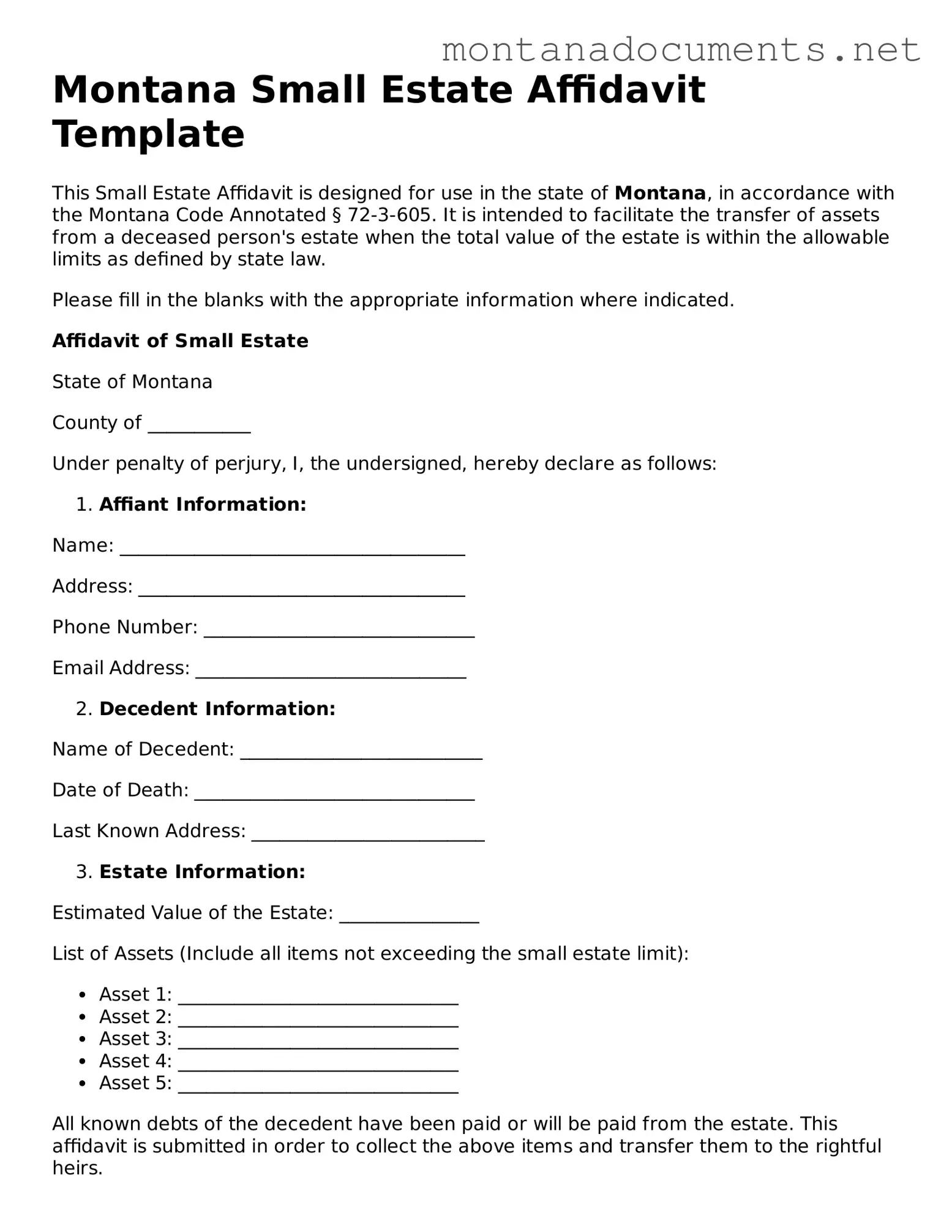Blank Montana Small Estate Affidavit Document
The Montana Small Estate Affidavit form is a legal document that allows individuals to claim assets from a deceased person's estate without going through the lengthy probate process. This streamlined approach is available when the total value of the estate falls below a specific threshold. By using this form, heirs can efficiently access the assets they are entitled to, simplifying the process during a challenging time.
Access This Document Now
